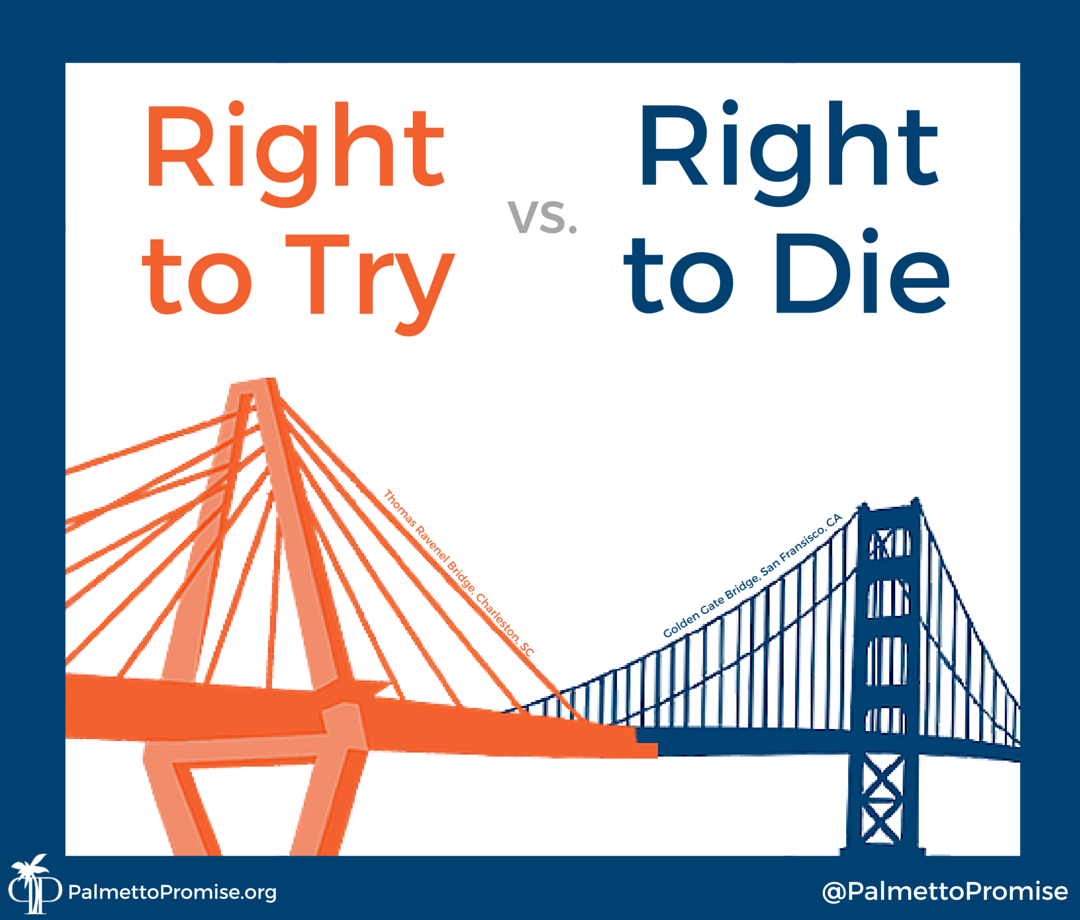Right To Try Vs. Right To Die

Adam Crain
One of the major victories for the people of South Carolina from the recently ended legislative session was Right to Try. You may have heard about it from our recent post, “That’s a Wrap” or from Ellen Weaver in her recent WSPA interview. The legislation gives terminally ill patients the “right to try” drugs that have passed Phase 1 safety testing by the FDA, but have not been made available for patients on the market. It will give these South Carolinians another shot at curing or reducing the symptoms of terminal diseases.
We could not help but notice, though, that a very different tale is being told in California. It is Right to Try vs. Right to Die, and the implications are more important than you may have imagined. What do the two different laws say about the direction of the two different states they were passed in?
Even as we celebrate the passage of a bill that removes the FDA roadblock between terminally ill patients and possibly life-saving treatment, California is removing roadblocks between terminally ill patients and life-ending medicinal regimens. Are the laws just two sides of the same libertarian coin or is there something more at work here?
You’re probably not surprised that those of us at Palmetto Promise believe there is deep philosophical divide that separates these bills. Governor Jerry Brown of California must think so too, because he recently vetoed the California legislature’s version of Right to Try. So let’s examine this.
Right to Try is grounded in the belief that government should make it easier for people to reach their full potential. Right to Die is grounded in the belief that government should make it easier for people to give up on that potential.
The advances humankind has made in scientific and technological advancements are nothing short of amazing. That ingenuity has created modern city skylines, purified water systems, and made historically deadly diseases like malaria curable.
But in the same way that science and technology can be used for good, it can be used to limit opportunity too. The atomic bomb is one of the most scientifically advanced creations and one of the most deadly. PCs, Macs, and smart phones are both amazing communicative and informational systems and the weapons of online predators and thieves.
Wrestling with these dual uses is not only something individuals must face, but governments too, and that fight is what we have seen play out on America’s opposite coasts. The good advancements in medicine and healthcare are now being used, in some cases, to end lives, not save them.
Ryan Anderson is the William E. Simon Fellow at the Heritage Foundation. He wrote about this topic in his article, Always Care, Never Kill: How Physician-Assisted Suicide Endangers the Weak, Corrupts Medicine, Compromises the Family, and Violates Human Dignity and Equality, He writes:
“People who deserve society’s assistance are instead offered accelerated death. Every human being has intrinsic dignity and immeasurable worth. For our legal system to be coherent and just, the law must respect this dignity in everyone by taking all reasonable steps to prevent the innocent, from being devalued and killed.”
If you are familiar with Palmetto Promise Institute at all, you know that our vision is to see a South Carolina where every person has the freedom and opportunity to achieve their God-given potential at every stage of life, even in the waning stages of terminal illness. Because this is our vision, we are glad to see Right to Try stand in stark contrast to Right to Die.




